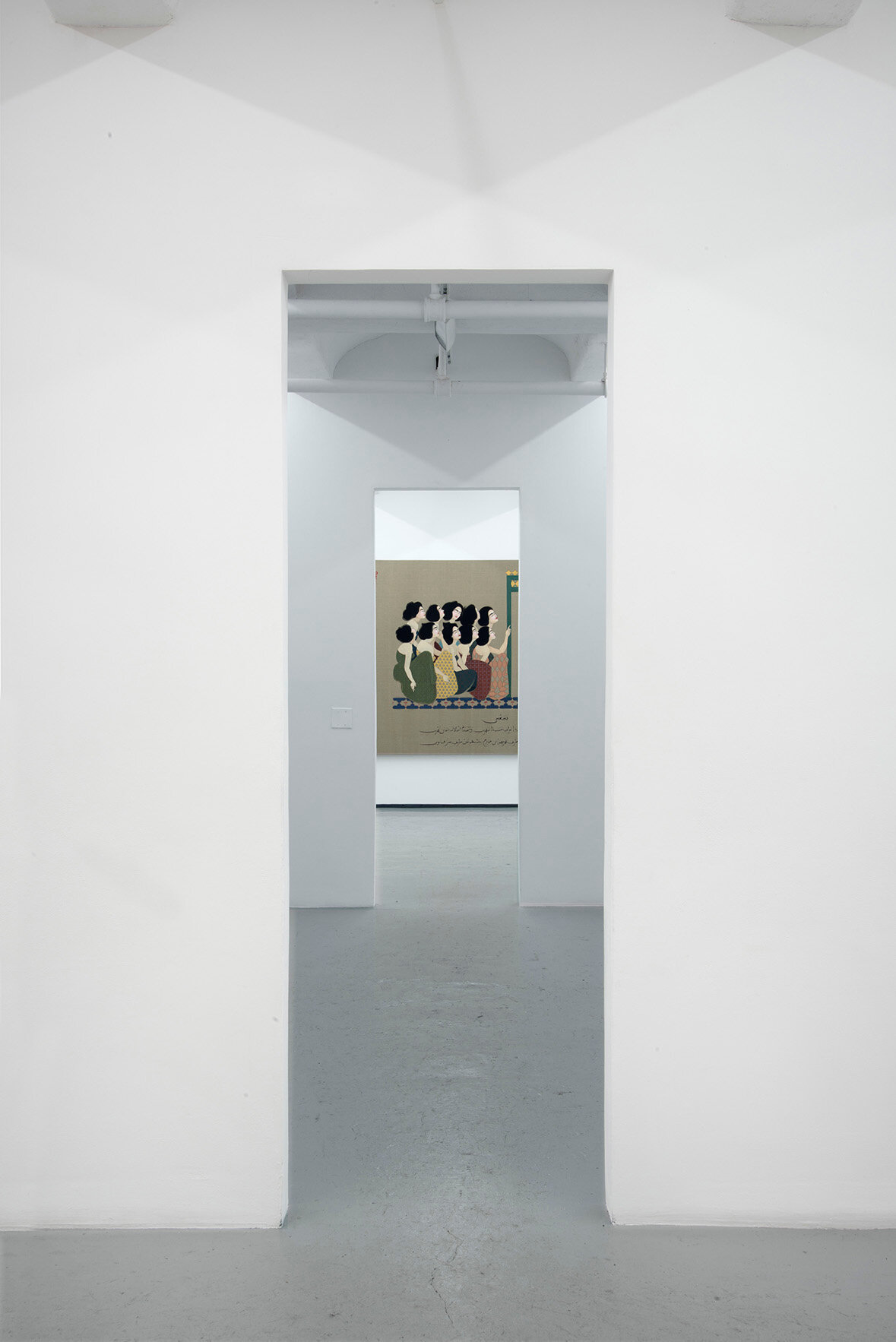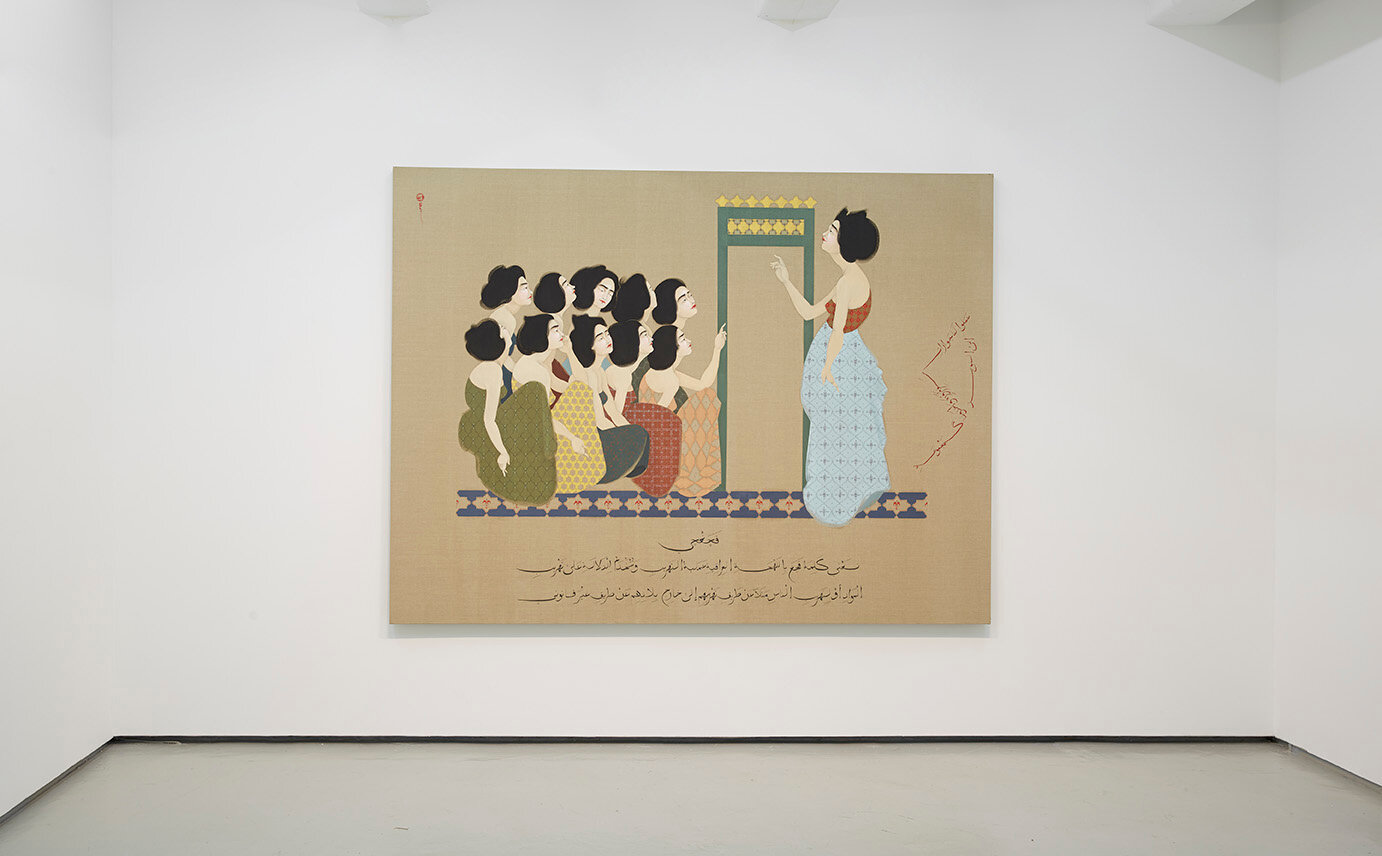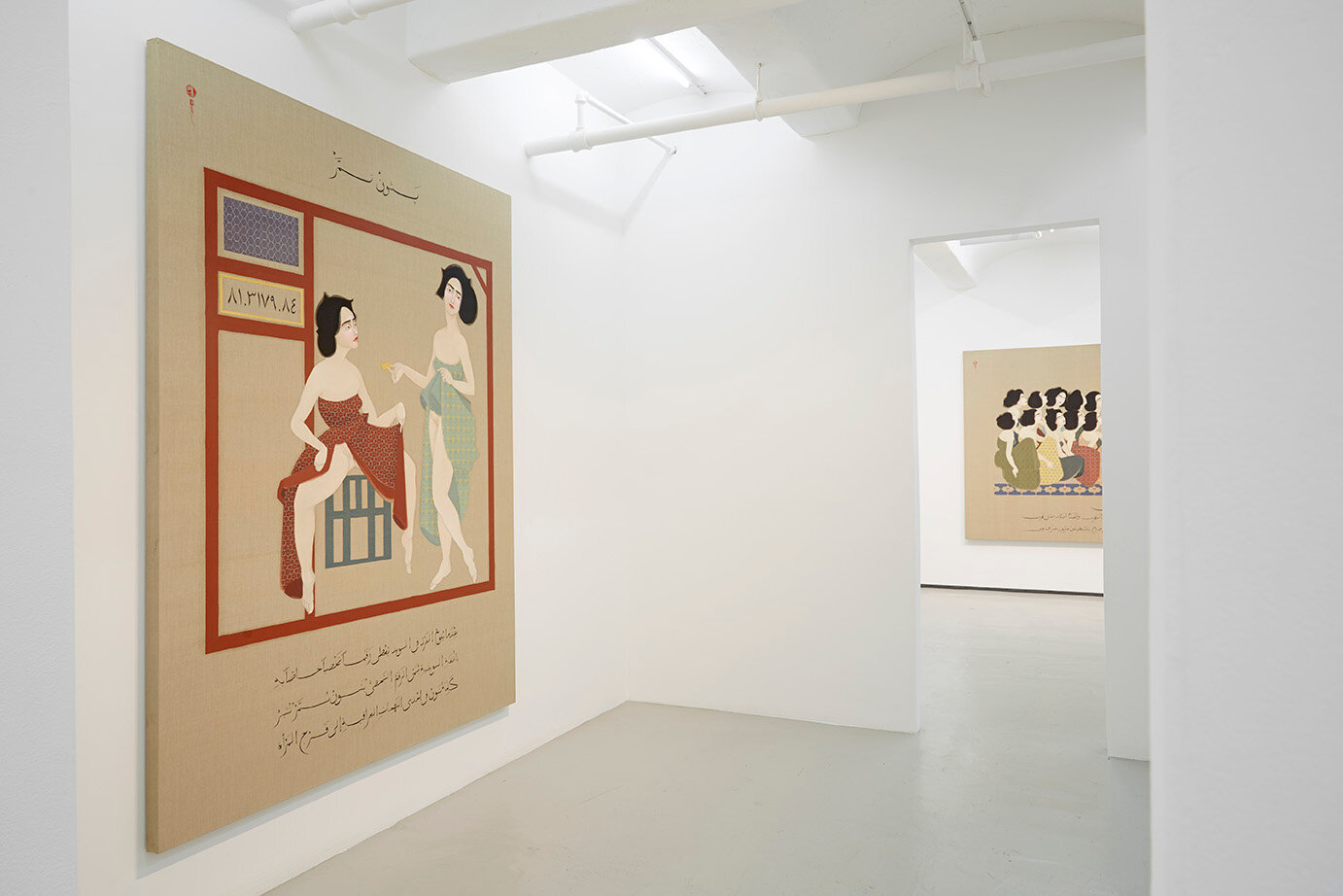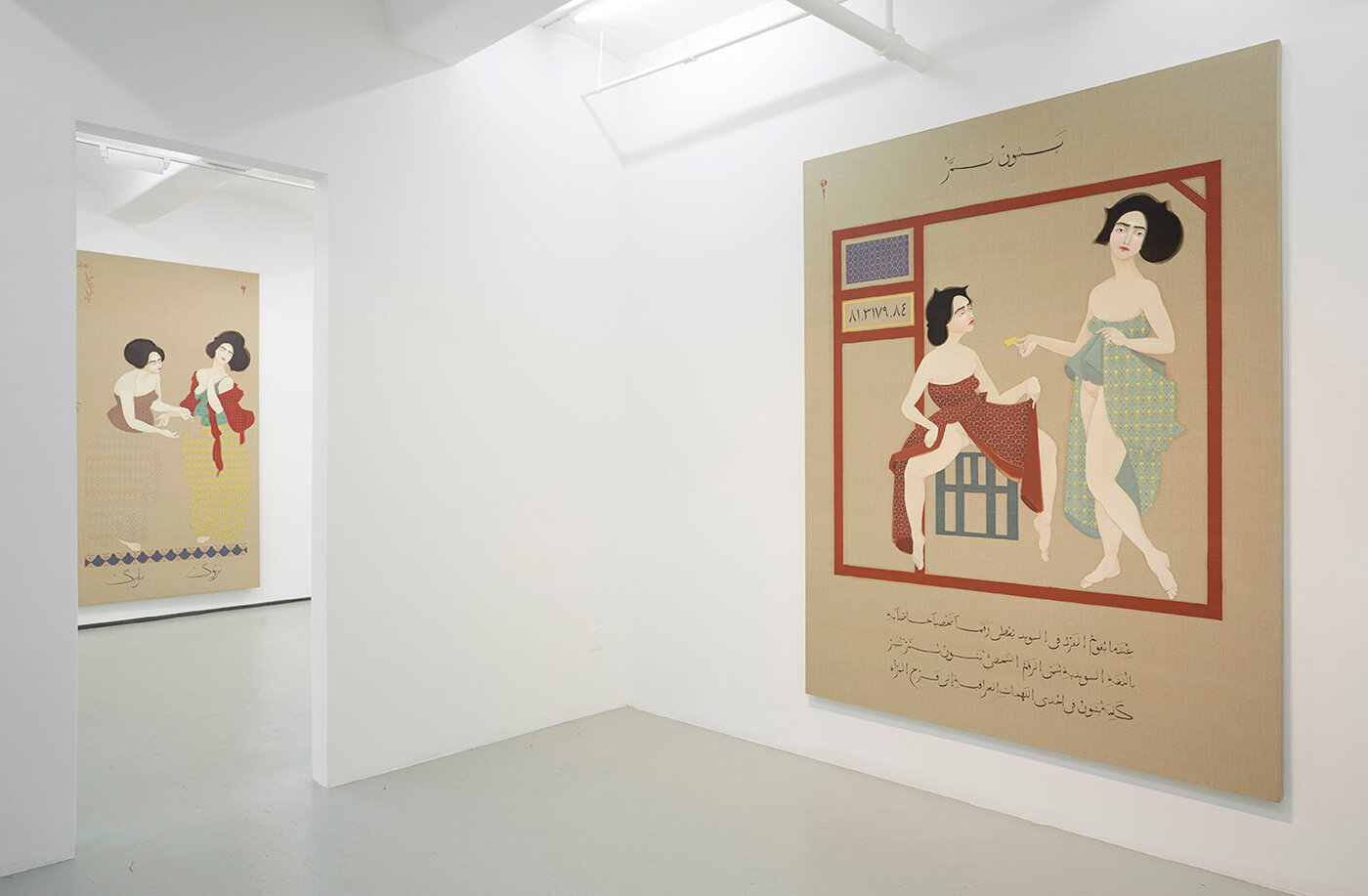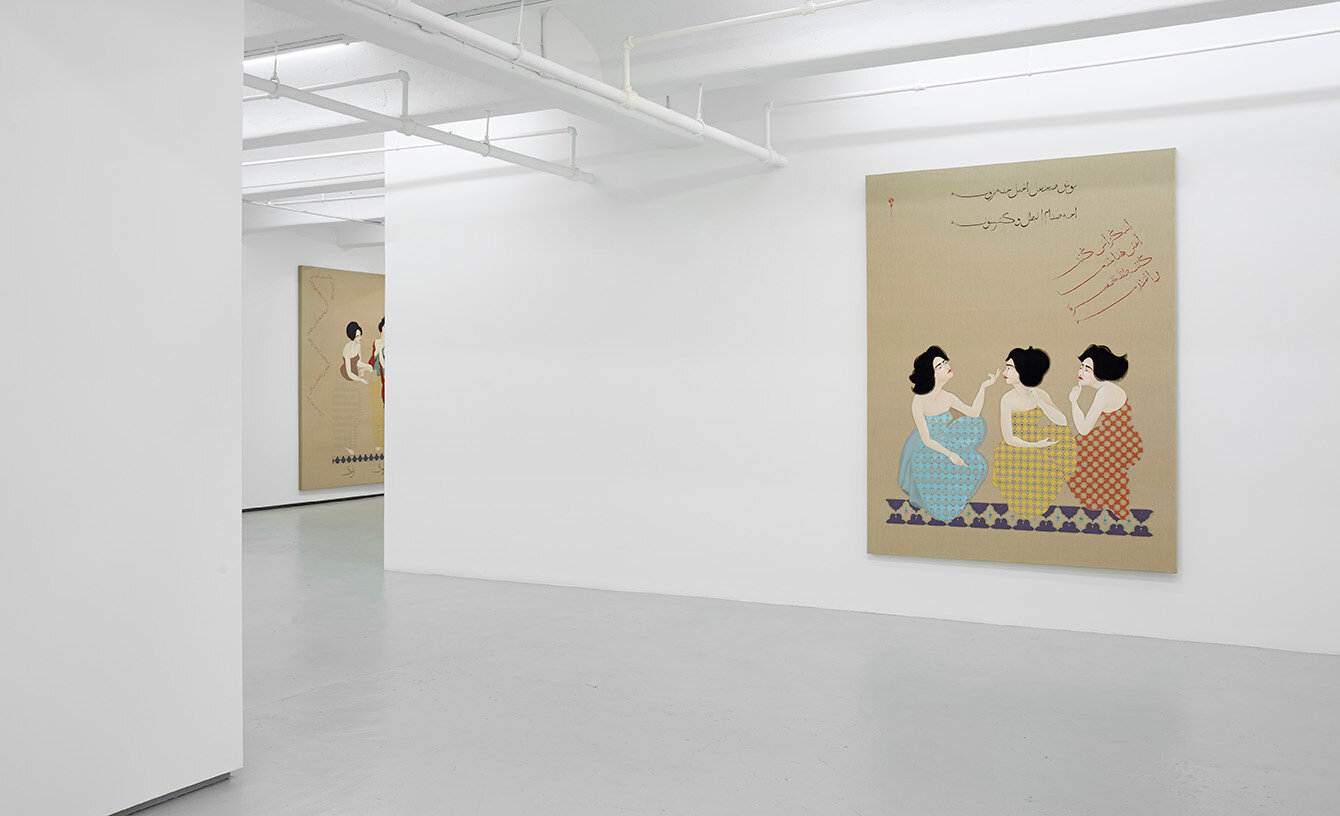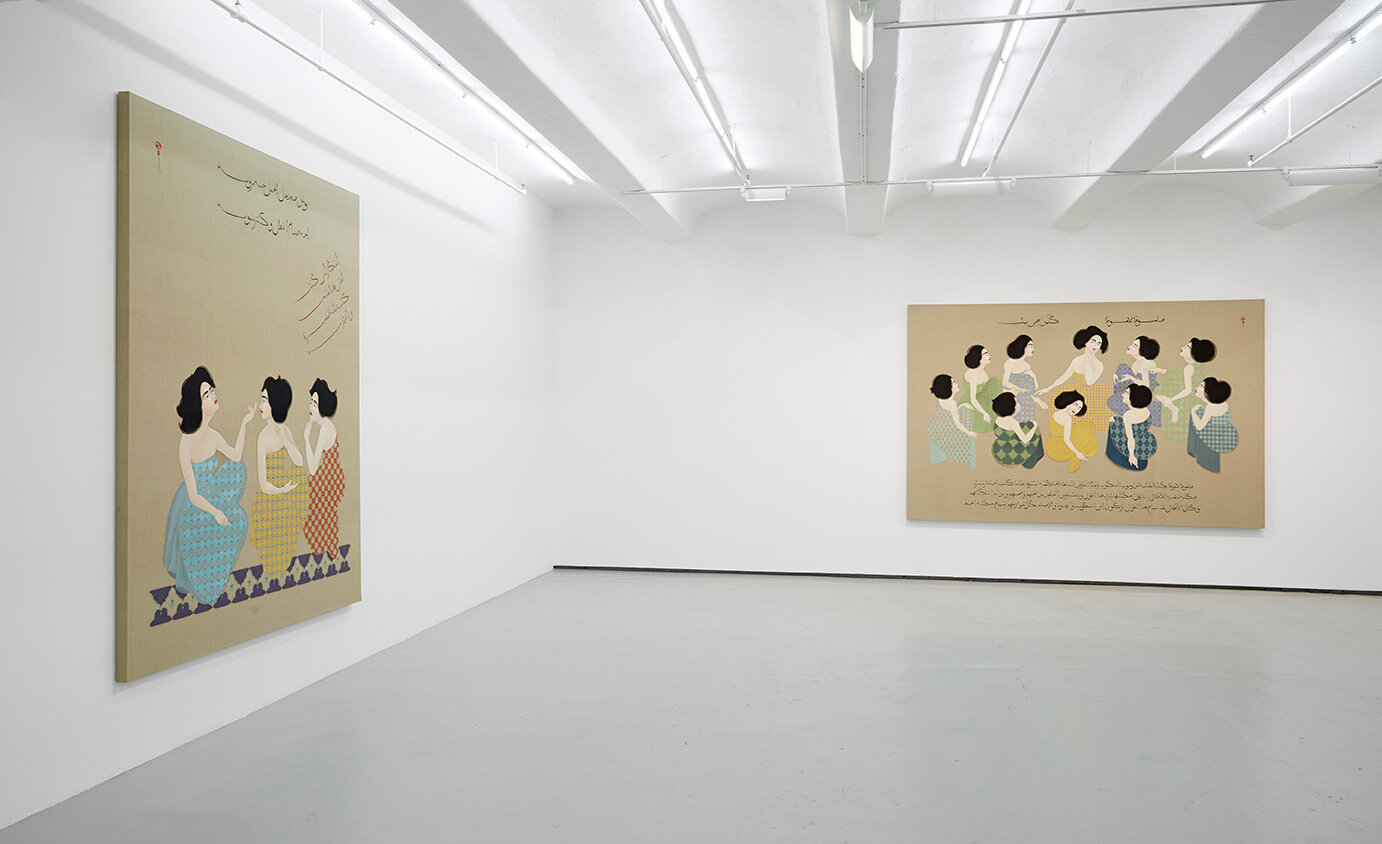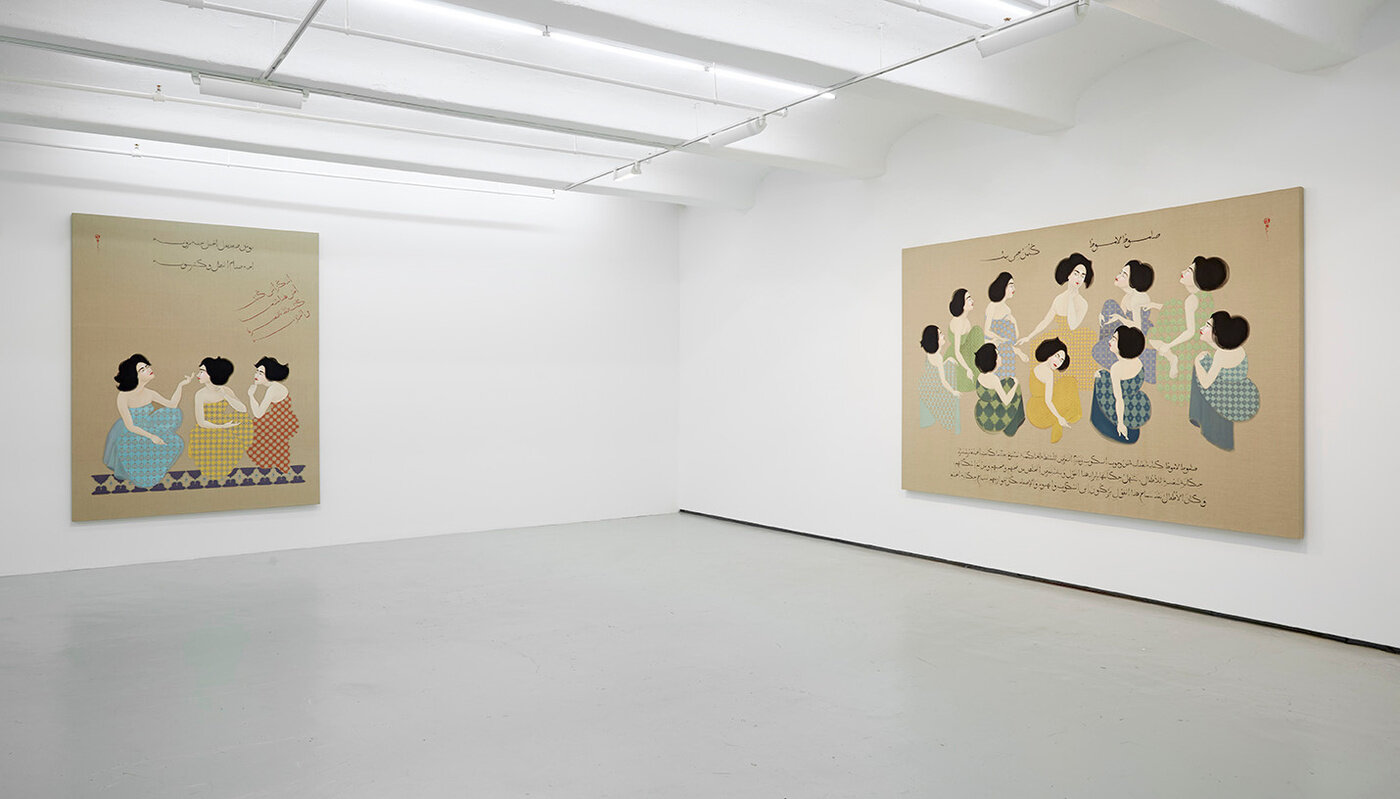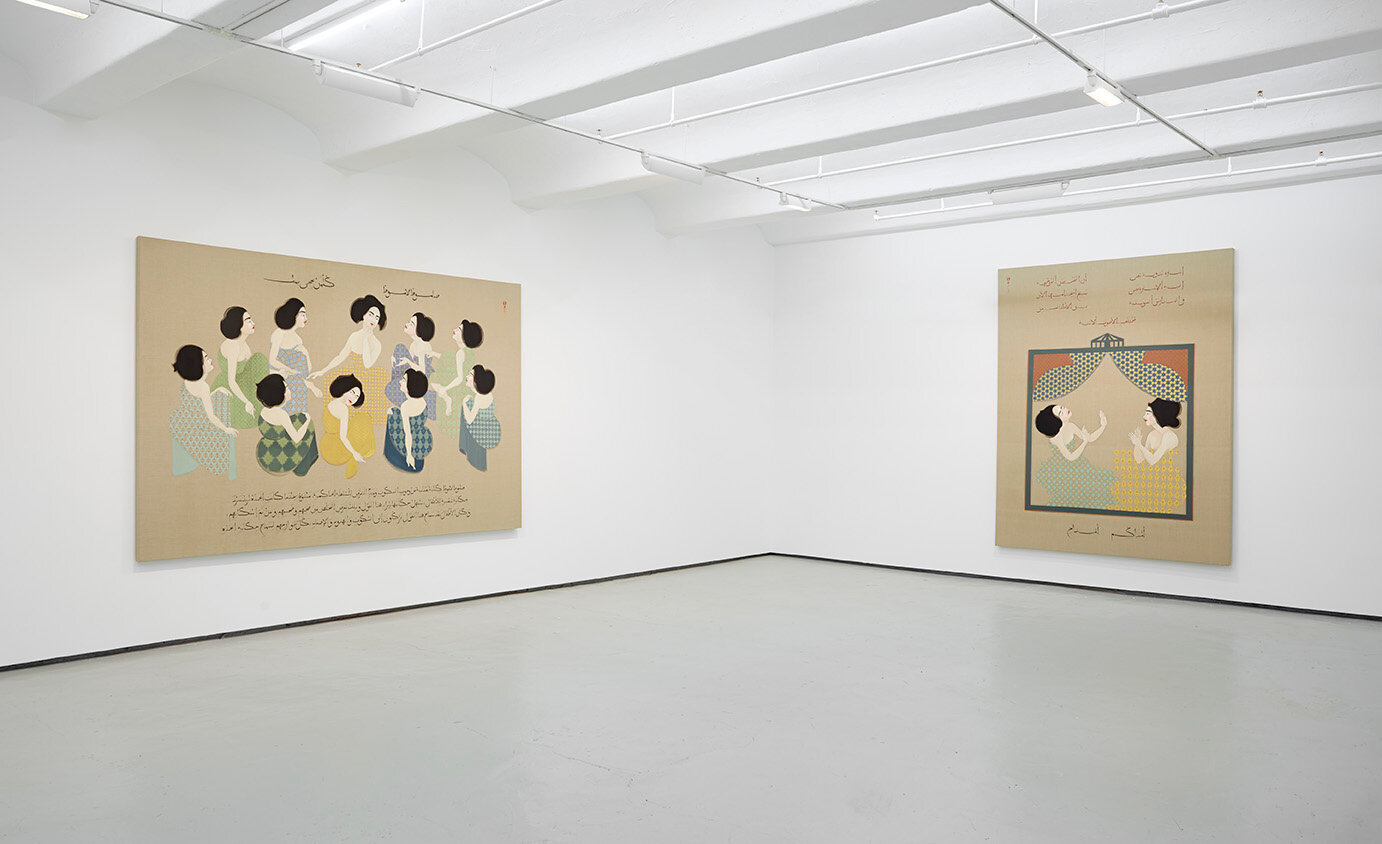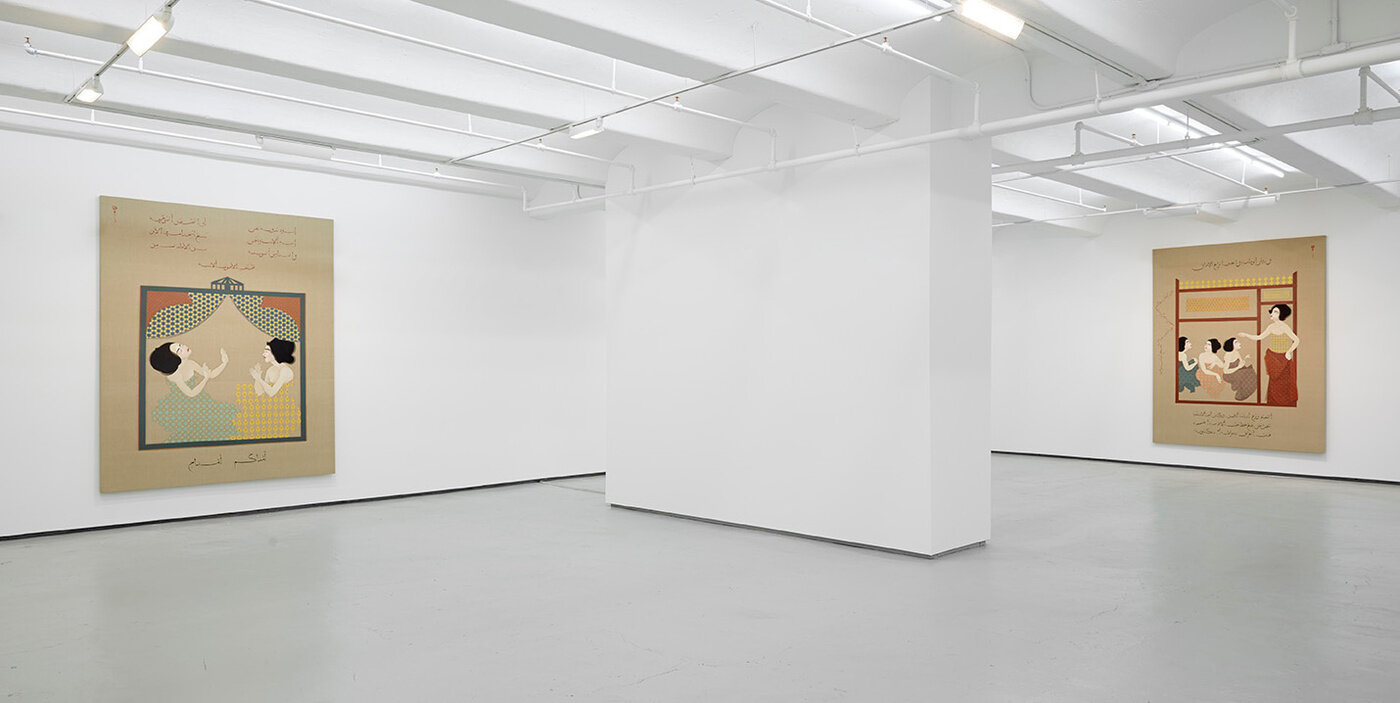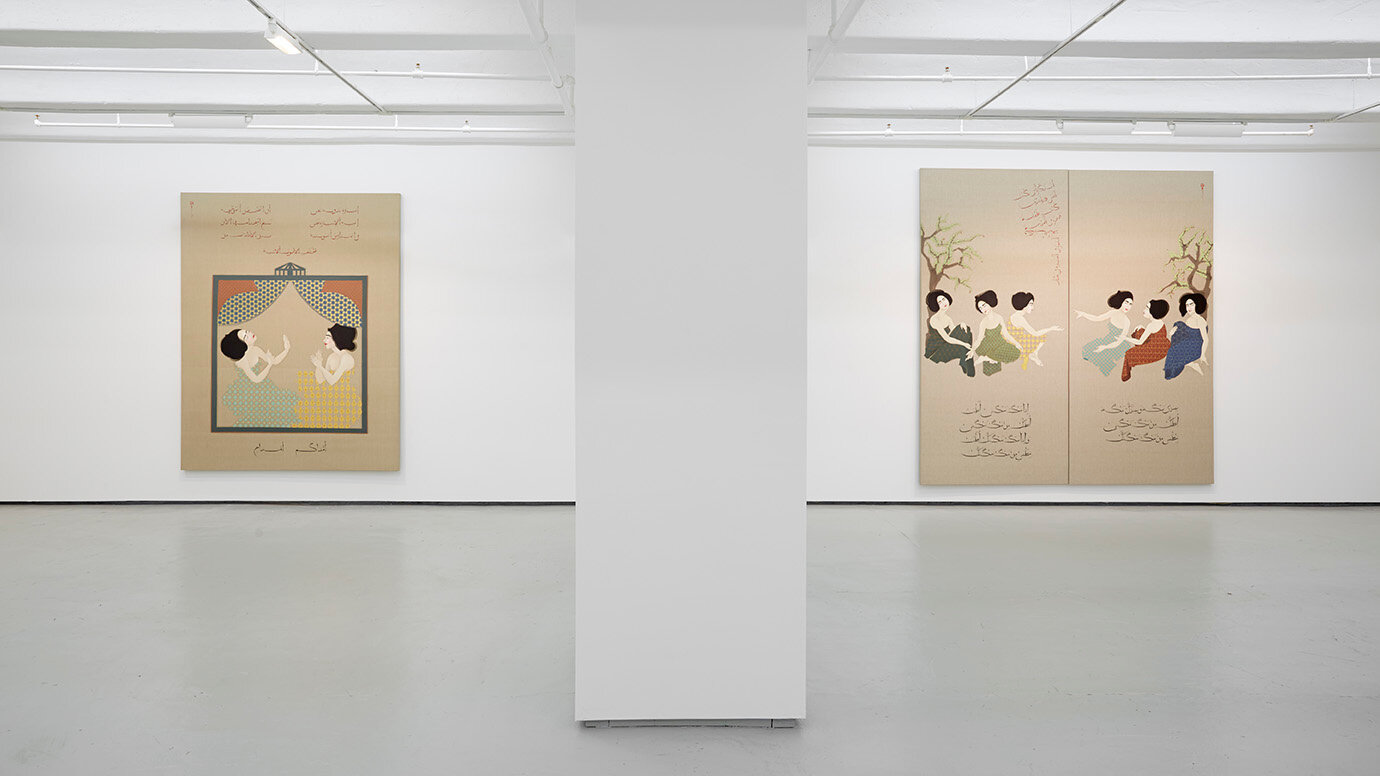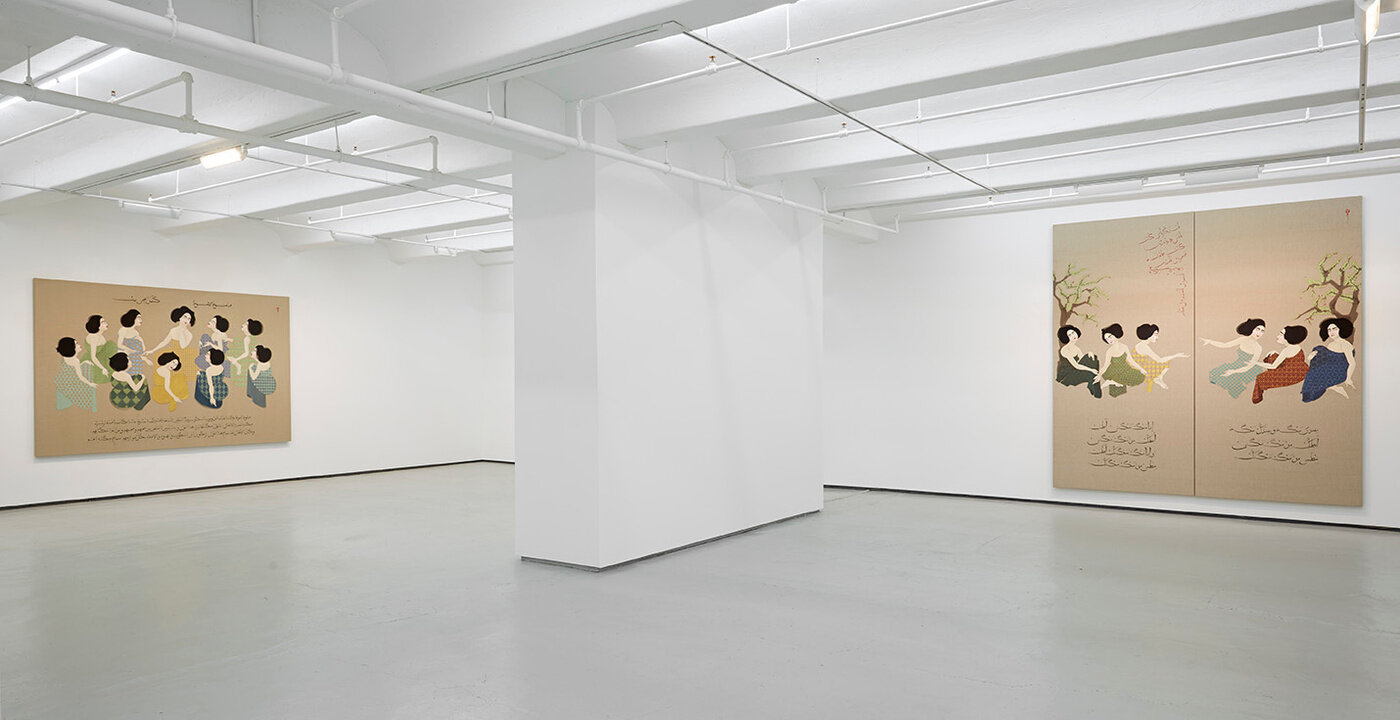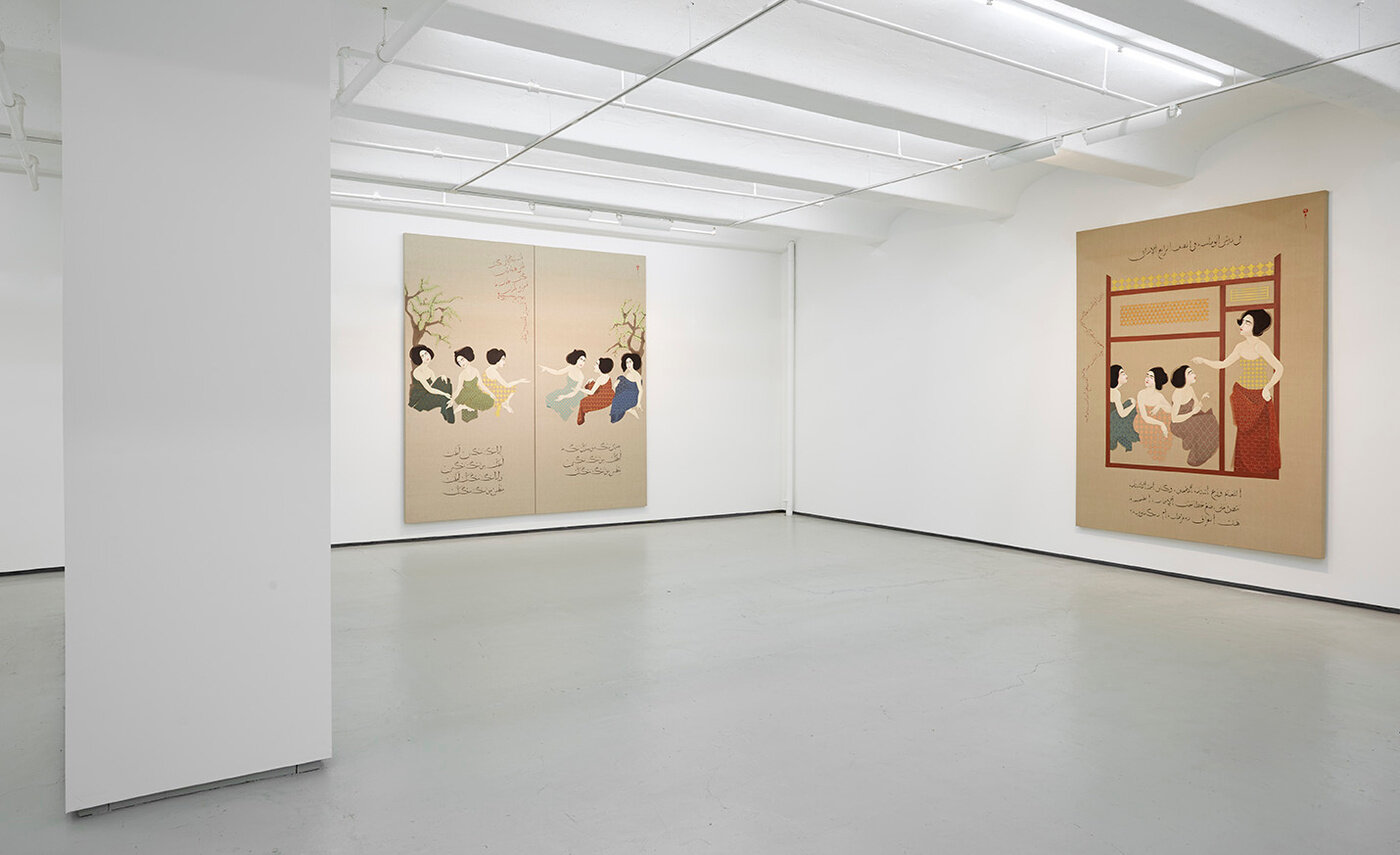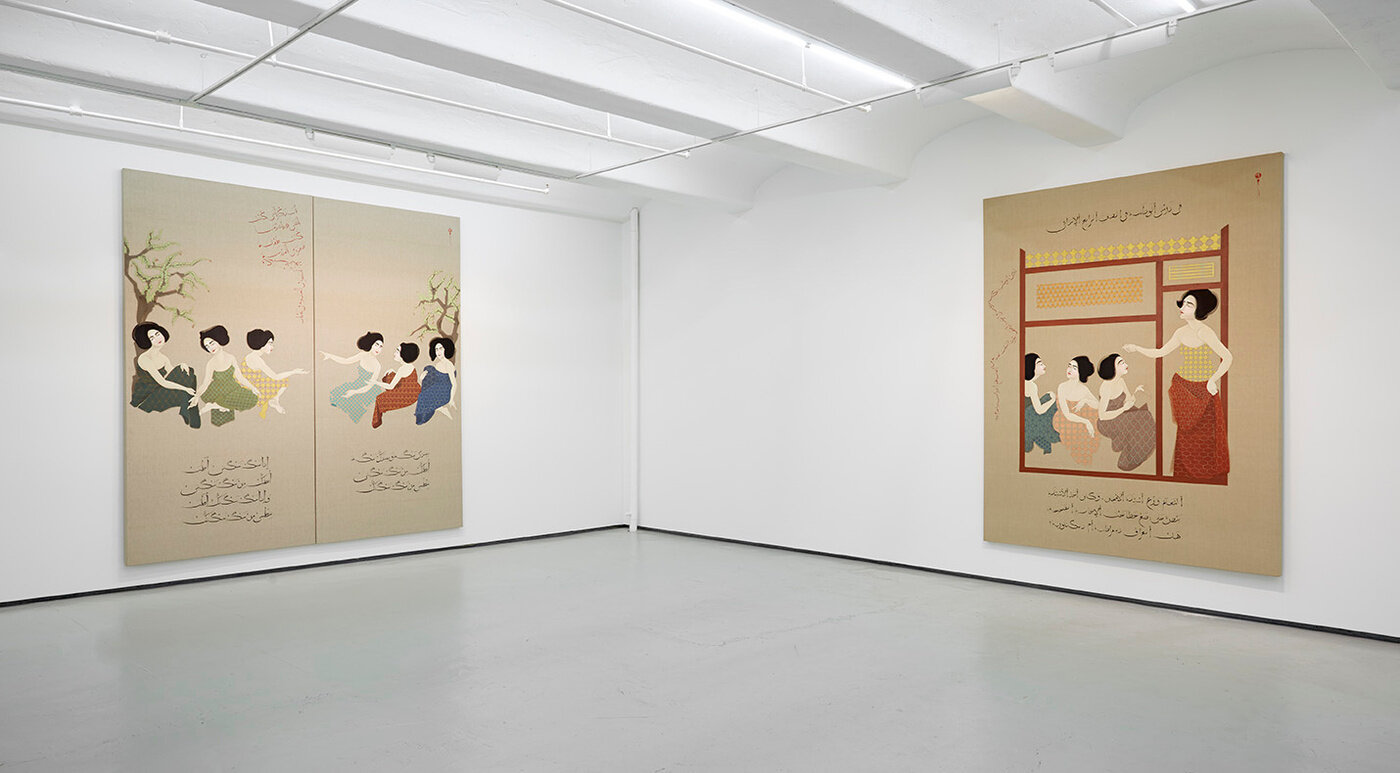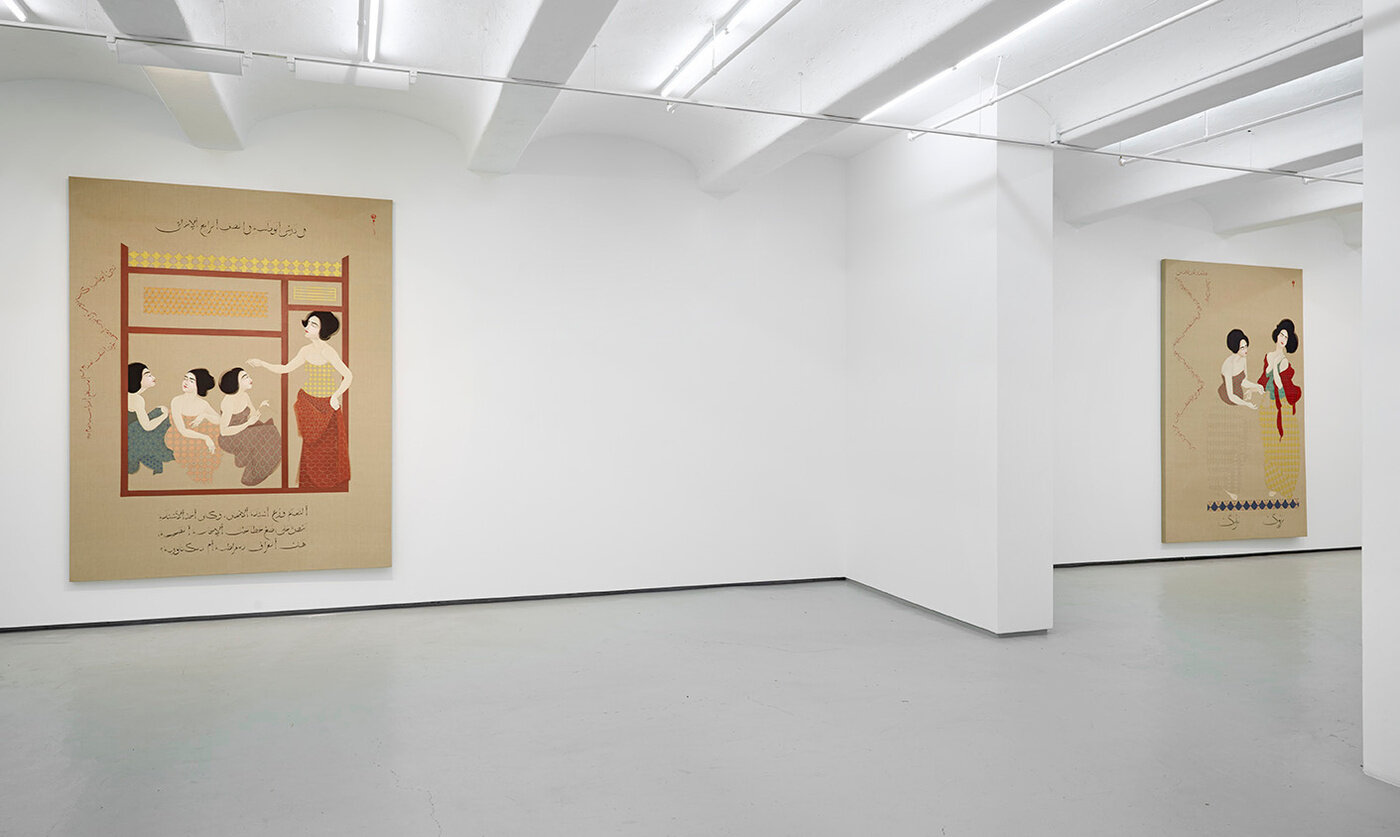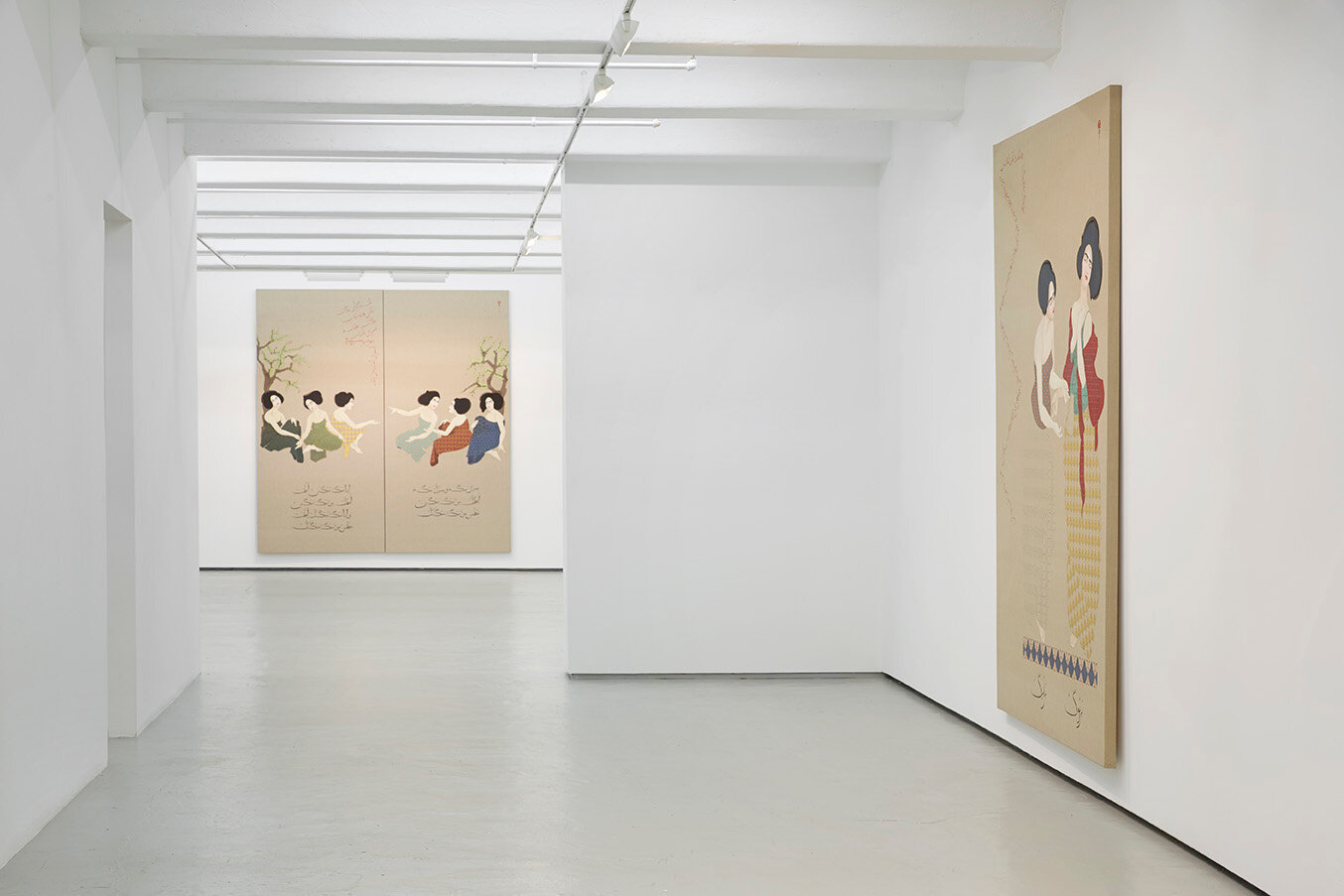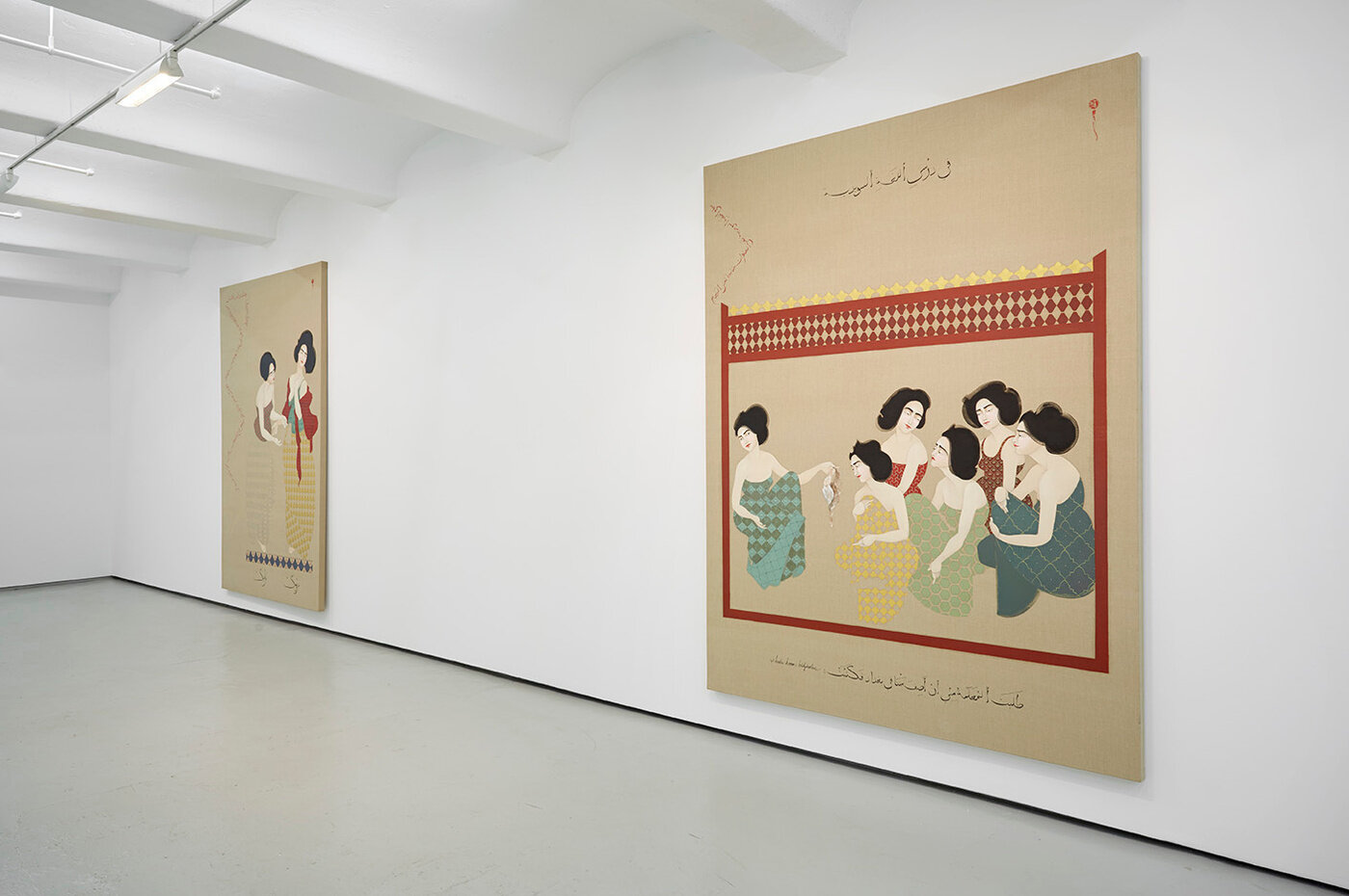How Iraqi Are You?
Works (Tap to zoom)
Press Release
HAYV KAHRAMAN
How Iraqi Are You?
February 27 - April 4, 2015
Opening reception: Friday, February 27, from 6-8 PM at 513 West 20th Street.
Jack Shainman Gallery is pleased to announce Hayv Kahraman’s second solo exhibition at our 20th Street space, How Iraqi Are You? The exhibition includes large-scale paintings on linen based aesthetically on 12th century Iraqi manuscripts illustrating personal memories from Kahraman’s childhood in Baghdad and as a refugee in Sweden. The following is an excerpt from a text written by curator Octavio Zaya on the occasion of this exhibition:
How Iraqi Are You? addresses the fragmented memory that never manages or succeeds in recovering or recreating that continuous and fluid past time that haunts any exile or foreigner. Expatriation and exile fracture forever any sense of belonging and any hope of ever being complete. And yet, Kahraman painstakingly aims to repeat, once and again, a history—her history—one that she feels she is forgetting; a collection of narratives that not only recover a past that she feels is made up now of tattered and fleeting memories, but that can also reflect a “new sense of coping with forcefully leaving one’s home and tirelessly integrating into a new culture.”
Kahraman modeled her new series after 12th century Arabic illuminated manuscripts—in particular, Maqamat al Hariri, an important canonical book, where the everyday life of Iraqis was portrayed with detail and care in images and text. The manuscript is, indeed, considered a major example of the Baghdad school of miniature painting that flourished in the 12th century and that was cut short by the Mongol invasion, which destroyed countless historical documents and books, and hence never developed further. It is, then, another instance of a larger loss that seems to be one of the major recurring themes in Kahraman’s oeuvre.
Kahraman's paintings use the illuminated manuscripts to recreate a forgotten history from the perspective of an immigrant. Kahraman uses this illuminated format to recall personal memories of her upbringing in Iraq and to learn to write Arabic again.
All the figures in the paintings are extensions of the artist’s body: she photographed herself and used the images for the productions of the figures. All of these figures are women, all are painted white, and all of them are formally rendered as those we find in some Renaissance paintings, Japanese illustrations and books or Persian miniature paintings. All seem to be engaged with themselves in all sorts of social, recreational, or personal matters, either learning Swedish in a class or recalling rhymes they learned in school.
But it is the writing that Kahraman carefully arranges over her canvases that reveals and unfolds the details behind these remarkable “vignettes” from the diaspora. Indeed, through these writings and notes, most of these figures tell us of experiences Kahraman and her family went through as refugees, and of some incidents that recall words and sayings she remembers from her childhood back in Iraq. Here, again, is that sense of loss and displacement. And that is precisely the reason why Kahraman decided to render all of her characters in white, without background or specific context, amid a flux of meanings and words, neither here nor there. As if, in the diaspora, these figures would have reached a moment where they viewed themselves as non-different, as the passersby who do not stand out, who only retain from the past the little, unassuming, perfectly safe secrets and mysteries of the mother tongue, its games and pleasures.
Instead, these new paintings attest to something quite different. Kahraman is facing “the other self,” the one that she rejected once, bleaching her skin and erasing herself by perfecting the accent of her new tongue, while she is losing her boundaries in a field without any other references or context than the one of the language she has forgotten and she is re-learning again to pass it on to her descendants. Between the signs of the works, the imagination of the artist, and her material reality, in their disparate functions, Kahraman has found a way to allow for the return of the repressed—that strangeness—to accept it and to enjoy it, as we enjoy that part of us that can finally articulate the difficulties we have in relating ourselves to the other, and as we still continue our way in that identification and dissolution process that is the very possibility for emancipation.
Thus, as Derrida would put it, decentering knowledge, Kahraman helps her otherness to breathe, and enables the excluded and the erased to come back to life within a world of growing systemic interdependencies. It is not an option anymore; it is a necessity.
Hayv Kahraman, born in Baghdad, Iraq, currently lives and works in San Francisco. She has participated in worldwide exhibitions including Piece by Piece: Building a Collection, Selections from the Christy & Bill Gautreaux Collection, Kemper Museum of Contemporary Art, Kansas City; Echoes: Islamic Art and Contemporary Artists, Nelson-Atkins Museum, Kansas City; The Jameel Prize 2011 – Shortlist Exhibition, Victoria and Albert Museum, London which traveled to venues including the Museum of Fine Arts, Houston and the Cantor Center, Stanford University; and Fertile Crescent, Paul Robeson Center for the Arts, Princeton. Her work is included in several public collections like the North Carolina Museum of Art, Raleigh; the Pizzuti Collection, Columbus; American Embassy, Baghdad; The Barjeel Art Foundation, Sharjah; MATHAF Museum of Modern Art, Doha; and The Rubell Family Collection, Miami.
Currently on view through April 4th at 524 West 24th Street is Michael Snow, A Group Show. Upcoming exhibitions at the gallery include Hank Willis Thomas, Unbranded: A Century of White Women, 1915-2015 opening April 10th and on view through May 23rd at 513 West 20th Street and 524 West 24th Street. Currently, Meleko Mokgosi and Status Quo are on view at The School in Kinderhook.
Gallery hours are Tuesday through Saturday from 10am to 6pm. For the full text by Octavio Zaya or additional information and photographic material please contact the gallery at info@jackshainman.com.

